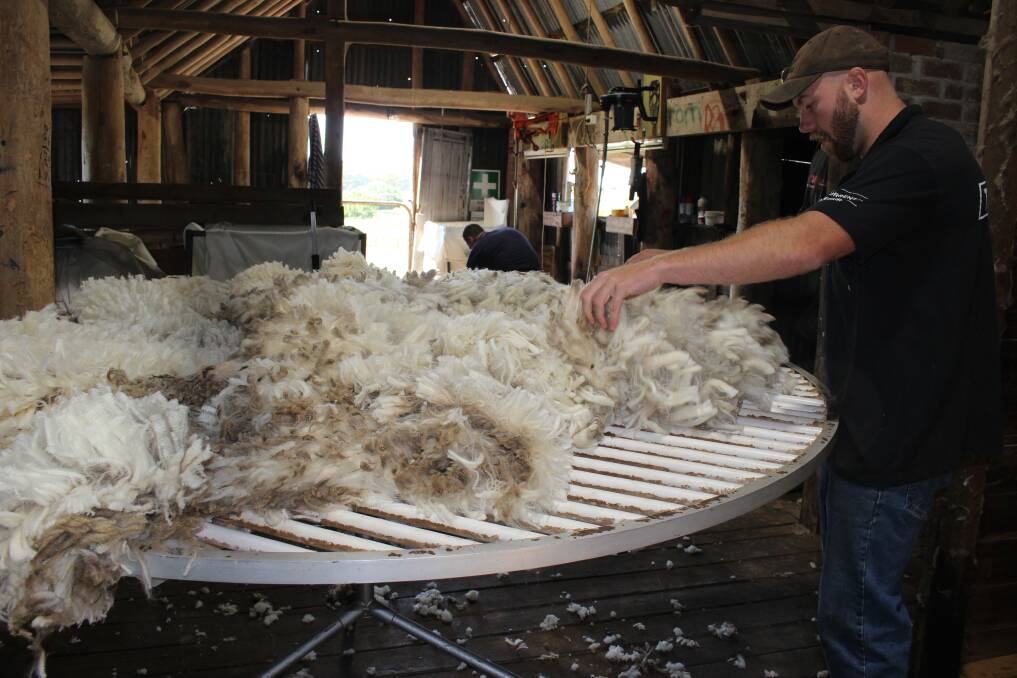
The Australian wool market managed to achieve "not a bad result" last week, given the uneven demand situation, exporter's cash flow issues and a large supply volume - any of which could have brought things undone.
Subscribe now for unlimited access to all our agricultural news
across the nation
or signup to continue reading
The overall result was a small drop of two cents per kilogram, with various currency movements leading to a US1c/kg fall and a 6-Euro cent increase in prices.
The Fremantle selling centre got back on track, with strong gains of 20-25c/kg for Merino fleece types.
The superior Tasmanian wools selling in Melbourne helped the superfine indicators there jump ahead of the Sydney indicators, and medium Merino indicators were generally just off the boil by a few cents per kilogram.
Crossbred wools meandered and closed within a few cents per kilogram of the previous week's levels, and the carding wool sector eased a smidge.
The New Zealand market continued to climb as widespread global demand from China, India and Europe saw buyers all competing for a very meagre selection of only 5000 bales and, consequently, there was another 3 per cent increase in prices.
In South Africa, nothing happened.
Simply put, the South African wool trade has a severe case of congestion - with about R500 million ($46 million) worth of greasy wool sitting at the wharf waiting for a ship to take it to China.
Shipping services to Europe are functioning okay.
But, from the previous three services from the Cape to China there is really only one reliable operator servicing the Asian route now.
It will take about three to four weeks for this backlog of 250 forty-foot containers to be cleared.
So, the South African trade agreed to cancel last week's auction and roll the catalogue over to another week.
Although it is a week-by-week proposition, these non-sale catalogues will be held over to fill some of the blank spots in the roster post-Easter.
Having 10,000 bales less available for the global wool market was certainly a positive factor for the over-supplied Australian market, and took some of the pressure off - although undoubtedly it added a little more angst to those managing exporter finances here.
Delays in shipping from Australia are severe, but not quite as bad as in Port Elizabeth.
Anything going into or out of China by plane, train or ship is subject to extra quarantine measurements and paperwork, leading to time delays, staffing issues and extra costs.
Localised COVID-19 outbreaks are still occurring in China, and the government's lockdown response in some cases may mean that wool can not travel from the scouring mill, located in one town, to the combing factory a few miles away because of quarantine lockdowns.
Even DHL and other courier services are blocked when such an outbreak occurs, making the transfer of samples and documents impossible.
Such is life under the pandemic in China.
But it will be interesting to see what the government policy is after the Winter Olympics are finished.
From a demand point of view, things are good - although stuttering slightly.
European mills continue to be active, but the pressure for prompt or nearly prompt delivery increases every week.
Both the global shipping delays and the ticking calendar are responsible.
With shipping times from Asia or South America blowing out by about four weeks, prompt stock in Europe is becoming a scarcity - at a time when knitting mills and garment factories are in full swing.
Only having a handful of early stage processing mills left in Europe leaves the textile chain at the mercy of global shipping flows, and the whole just-in-time philosophy has been more or less thrown out the window as a future management tool.
Funding a bit more stock in future seems like a much better prospect, and the cost pales into insignificance compared to the increased cost of buying on the spot market - let alone funding the increased energy costs across Europe this winter.
Of course, where the boundaries of Europe will be drawn in future is still a point of conjecture at present - with a fair few soldiers lining up to potentially argue about that.
India was reportedly more active again this week, broadening the portfolio of types and destinations for exporters to work with.
Domestic demand in China continues to bubble along, with export knitting orders good and weaving for uniform and brands very good.
But the local sweater market is said to be somewhat quiet.
The outlook for wool from a customer perspective, at least early stage processors and traders, is quite optimistic.
Despite the funding and shipping issues, there seems to be enough business going around to keep everyone involved active.
Compared to other fibres, Merino wool prices are relatively cheap and crossbred wool extremely so.
According to Andrew Whitelaw, of Thomas Elder Markets, the price of cotton has increased by 44-45 per cent in the past year, with Chinese polyester prices also up by about 17pc.
Australian wool, as measured by the Australian Wool Exchange (AWEX) Eastern Market Indicator (EMI), has increased in the past 12 months by 10pc.
But in USD terms, which is what most of the customer base trades in, the increase during the past 12 months is a meagre 1pc.
Certainly, the superfine Merino categories have performed better than the medium and broad wools.
But these are now just close to regaining the price peak reached in mid-2021 and, while there is a little muttering about the high superfine Merino prices, these still compare very favourably with current cashmere prices.
Interestingly, the medium Merino segment received a boost on the futures market last week, whereas superfine Merino prices were stagnant - perhaps heralding a move to close the basis in coming months.
Overall, the next month should see some welcome stability in wool prices based on overseas customer indications.
But Australian wool dumps are beginning to clog-up too.
- ELDERS WOOL

